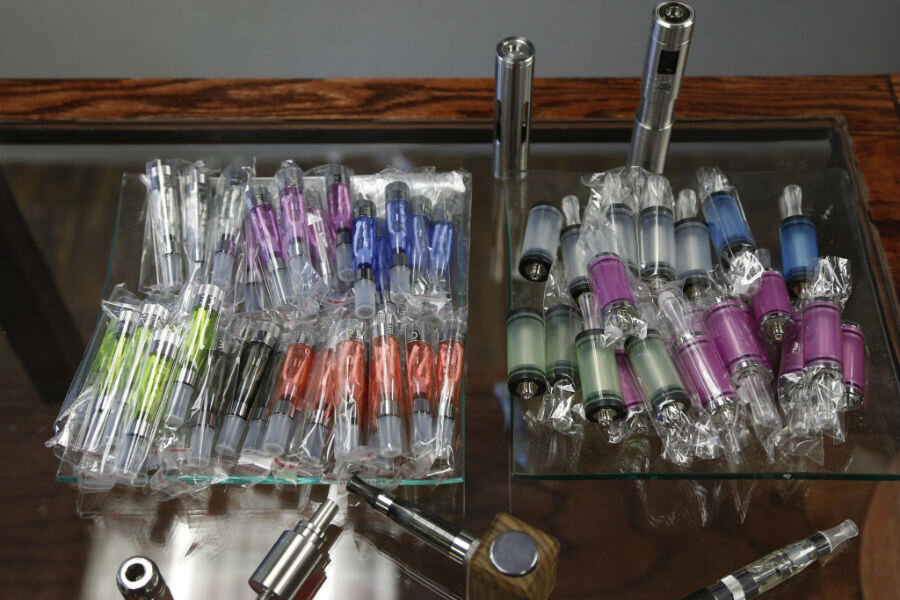Electronic cigarettes gain foothold in American middle and high schools
First, the good news: Far fewer teens are taking up cigarette smoking than ever before. However, many are instead turning to electronic cigarettes, according to a national survey of middle and high school students.
The National Institute on Drug Abuse (NIDA) uses the annual Monitoring the Future Survey to gauge the level of drug use among young adults. The 2014 edition, released Tuesday, holds many good news stories, including declines in opiod, prescription drug, and alcohol use, which officials say affirm the efficacy of substance abuse prevention efforts.
However, those gains have been largely eclipsed by the apparent rise of electronic cigarette use.
This was the first year that the survey included queries relating to so-called e-cigarettes, so it is unclear exactly how sharply usage rates among teens are rising. This year, more than 41,000 students at 377 public and private schools participated in the study, which has been conducted annually since 1975.
E-cigarettes have only become widely available in the United States in the past several years. They have rapidly gained a foothold on store shelves alongside tobacco cigarettes and cigars. Unlike traditional cigarettes and cigars, e-cigarettes contain no tobacco. Users instead fill the plastic or metal tubes with a liquid nicotine solution, which becomes vaporized when heated.
The use of e-cigarettes have become so commonplace, the Oxford Dictionaries selected “vape,” a term for inhaling nicotine-laced vapor through an e-cigarette, as the word of the year. In April, the Food and Drug Administration proposed a draft set of regulations governing the sale of e-cigarettes under the Tobacco Control Act. Such regulations would prohibit the sale of e-cigarettes to minors. Opponents of the regulations argue that because electronic cigarettes do not contain tobacco, they should not be regulated as such.
Some e-cigarette manufacturers and public health experts have suggested that vaping could be a less harmful alternative to cigarette smoking for tobacco smokers who are seeking to quit – though the jury is still out on whether scientific data will back up that assertion.
Other health advocates worry that claim has fueled a public perception that e-cigarettes are a healthier alternative than cigarettes. That perception is particularly troubling when it comes to young people who have never been exposed to nicotine, said NIDA Deputy Director Wilson Compton in a video.
“About 8 percent overall of 8th graders report use of these electronic cigarettes in the last month,” Dr. Compton said. “About half of those had never used another kind of cigarette before. So this is perhaps a concerning exposure to nicotine at quite a young age.”
Usage rates among high-schoolers are twice as high, with 16 percent of 10th graders and 17 percent of 12th graders reported having used an electronic cigarette in the previous month.
Those percentages are significantly higher than the rate of tobacco usage reported in previous years, suggesting that some teens who would never have considered picking up a cigarette are willing to use an e-cigarette.
Daily cigarette smoking has declined by nearly 50 percent over the past five years, the study found. Just 1.4 percent of eighth graders, 3.2 percent of 10th graders, and 6.7 percent of 12th graders reported using tobacco on a regular basis.
“Despite the positive developments this year, we are concerned about the levels of e-cigarette use among teens that we are seeing,” said principle investigator Lloyd Johnston, of the Institute for Social Research at the University of Michigan, in a press release. “It would be a tragedy if this product undid some of the great progress made to date in reducing cigarette smoking by teens.”






